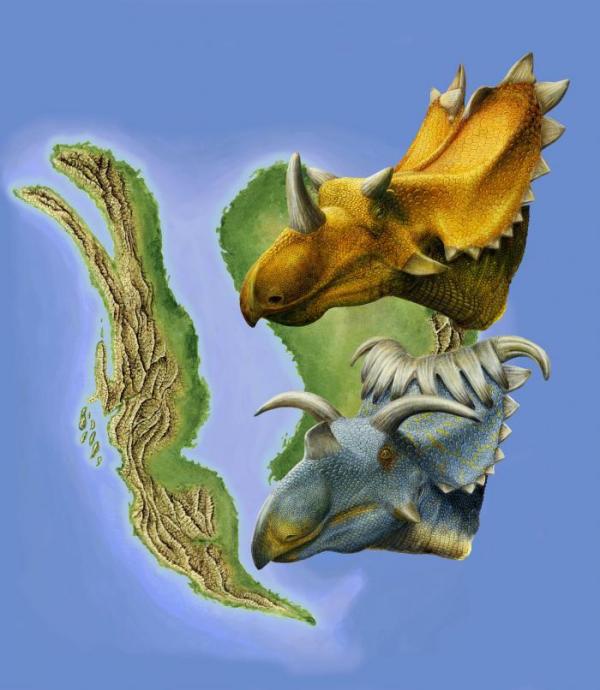We're open daily! View holiday hours
Science News
New Horned Dinosaurs
September 22, 2010

Published today in PLoS ONE, are two new remarkable species of dinosaurs from the Late Cretaceous, Utahceratops gettyi and Kosmoceratops richardsoni.
They are closely related to Triceratops and have very cool horns, but sport very different looks. From the Dinosaur Tracking blog in Smithsonian:
While Utahceratops had relatively short brow horns in front of a large frill that was slightly indented inwards along its top margin, the slightly smaller Kosmoceratops had longer brown horns and an array of spikes that spilled forwards over its frill like a chasmosaurine comb-over.
The comb-over seems to have served a similar function back then, according to National Geographic News,
… the horns were likely a sexual display to attract mates or intimidate rivals.
The fossils were found in Grand Staircase-Escalante National Monument, in southern Utah, a hotbed of dinosaur findings. Back in the day, a warm, shallow sea called the Western Interior Seaway extended from the Arctic Ocean to the Gulf of Mexico, subdividing the North American continent. The western part formed a mini-continent known as Laramidia. These new findings add to the abundance of large dinosaur species found in such a small region.
Currently, five species of giant (rhino-to-elephant-sized) mammals inhabit the entire continent of Africa. Seventy-six million years ago, there may have been more than two-dozen giant dinosaurs living on a landmass about one-quarter that size. Researchers have asked for years, how could the land sustain such a large population? This recent discovery could help solve that mystery. Lead author of the PLoS One paper, Scott Sampson, of the Utah Museum of Natural History, said this in the Smithsonian blog:
… these finding suggest that the hothouse world of dinosaurs was, at least in some respects, very different than the one we know today.
Image courtesy of Utah Museum of Natural History